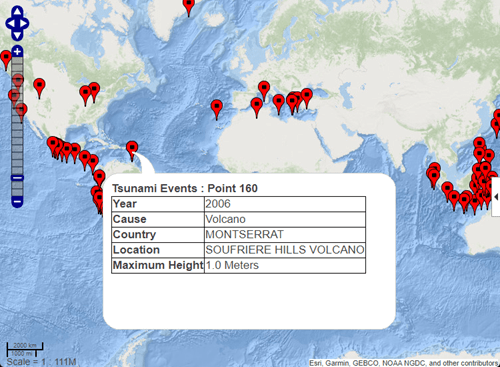makeattribspec
Create attribute specification
Description
attribspec = makeattribspec(S)kmlwrite,
wmmarker, wmline, and
wmpolygon functions based on the vector geographic features stored in
S.
The kmlwrite function creates an HTML table from attribute fields.
The first column of the table includes attribute labels and the second column includes
attribute values as text. Use an attribute specification with the
kmlwrite function and Description name-value
argument to specify which attribute fields to include in the HTML table and the format of
the attribute values.
When you plot features using wmmarker, wmline,
or wmpolygon, you can view feature balloons with attribute information
by clicking on features. Use an attribute specification with wmmarker,
wmline, or wmpolygon and the
Description name-value argument to specify which attribute fields to
include in the feature balloons and the format of the attribute values.

